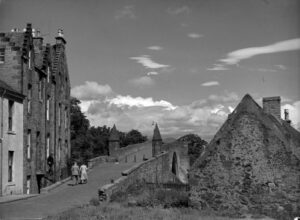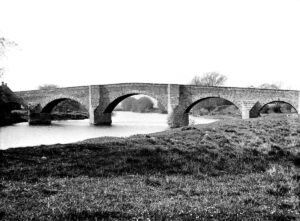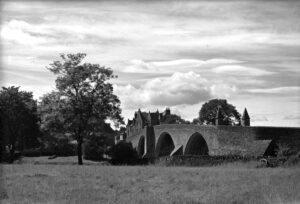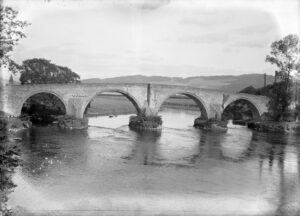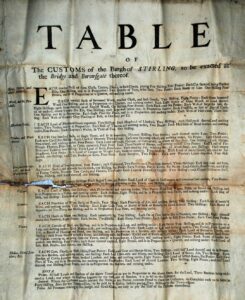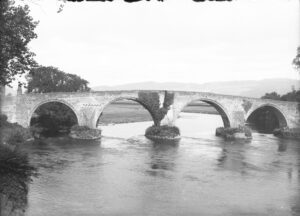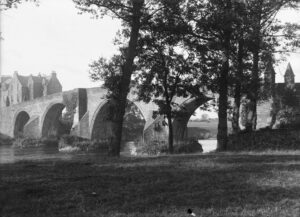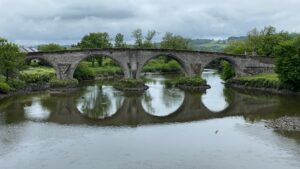For March’s Document of the Month we are looking at Stirling’s Old Bridge as part of our focus on waterways in this second Scottish Year of Coasts and Waters.
The Old Bridge in Stirling is, of course, famous as the site of William Wallace’s victory over the English forces of Edward I at the Battle of Stirling Bridge. The bridge in 1297 is not, however, the bridge we see at the site today. The early mediaeval bridge was built slightly upstream of the present site and would have been a wooden construction. It seems likely from remains found in the river that this structure was rebuilt more than once before the decision was made to construct a more durable bridge of stone.
It is thought that the current Old Bridge was built in the late 1400s. It is certainly a beautiful example of a late mediaeval bridge with its four nearly semicircular arch spans of 38 feet, 55 feet, 56 feet and 48 feet from south to north. The span sizes were determined by the foundation conditions, which is often the case with mediaeval bridges. The bridge piers are 14 feet 9 inches thick and there is a slight bend in the bridge of about 2 feet, possibly also due to foundation conditions. The roadway is 13 feet wide between parapets. It is built of Ballengeich stone from the local quarry of that name.
Maintenance of the Bridge was the responsibility of the Town Council and the Burgh minutes series has numerous references to work being undertaken to repair and improve the bridge over the years.
During the Jacobite Rebellion in 1745, General Blakeney, Governor of Stirling Castle, had one of the bridge’s arches destroyed in an attempt to stop the progress south of Charles Edward Stuart’s army. All small boats operating on the river where also confiscated and lashed to one of the piers of the Bridge to stop the rebels using them to ferry across the Forth. The missing arch was rebuilt in 1749.
Originally, the bridge would have had an archway with a gate set into it where the tolls or customs of the Town of Stirling would have been paid on goods brought into the Town. There was a Customs Inn built near the bridge, now demolished, but the name persists as that of the modern roundabout built in the 1960s, at about the same time as the Old Bridge was declared a listed structure.
The bridge was closed to vehicular traffic in 1911, the new road bridge taking vehicles into Stirling from this time on.
The bridge is a graceful and attractive structure and has therefore been the subject of a number of paintings, photographs and postcards over the years. A selection of those held at the Archives are shown here along with an image taken from the new road bridge in 2020.
